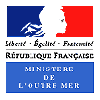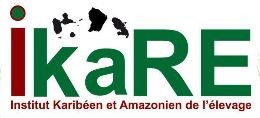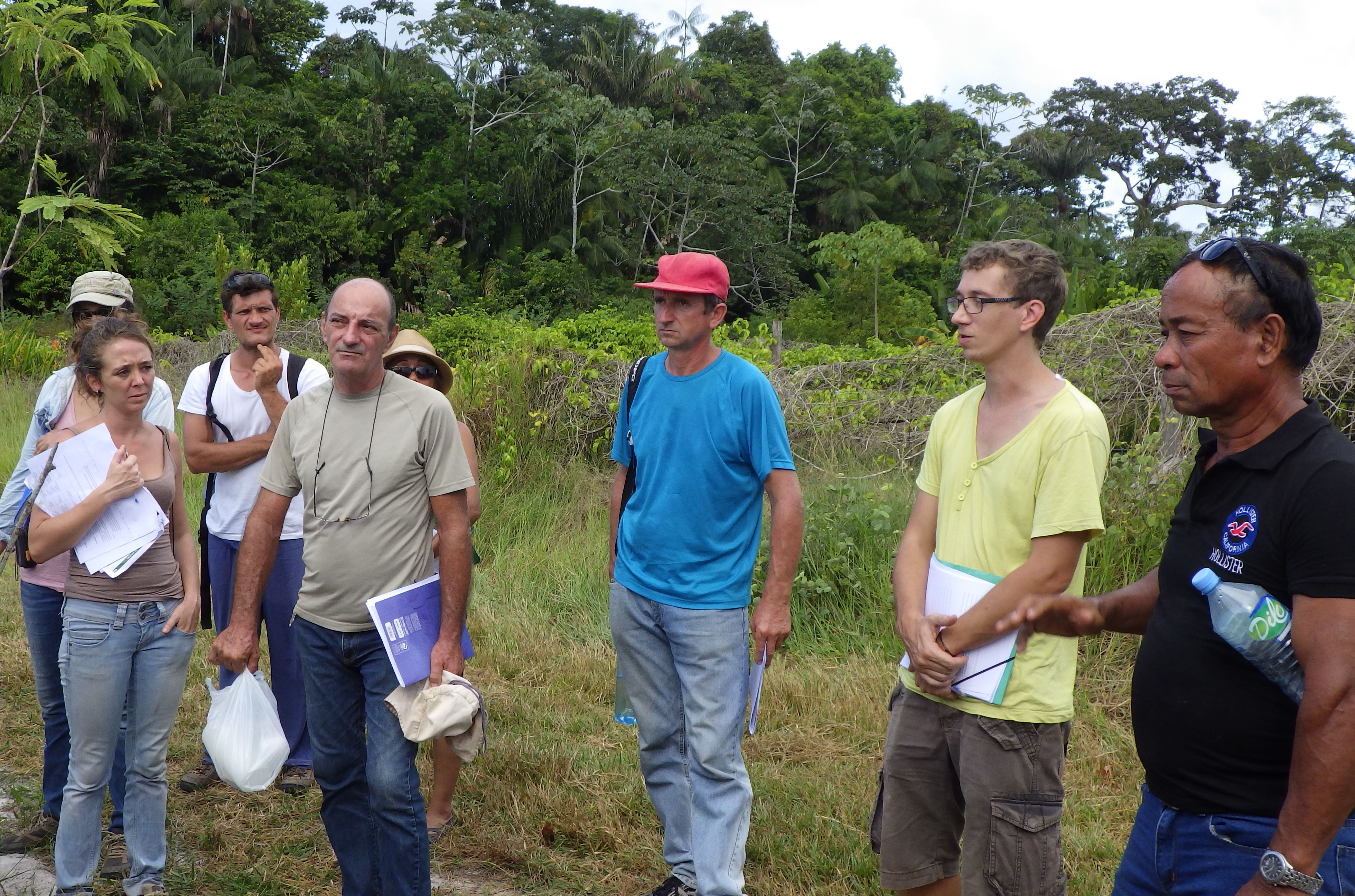
by Solicaz | Oct 12, 2015 | Agriculture/Agroforestry, News 2015
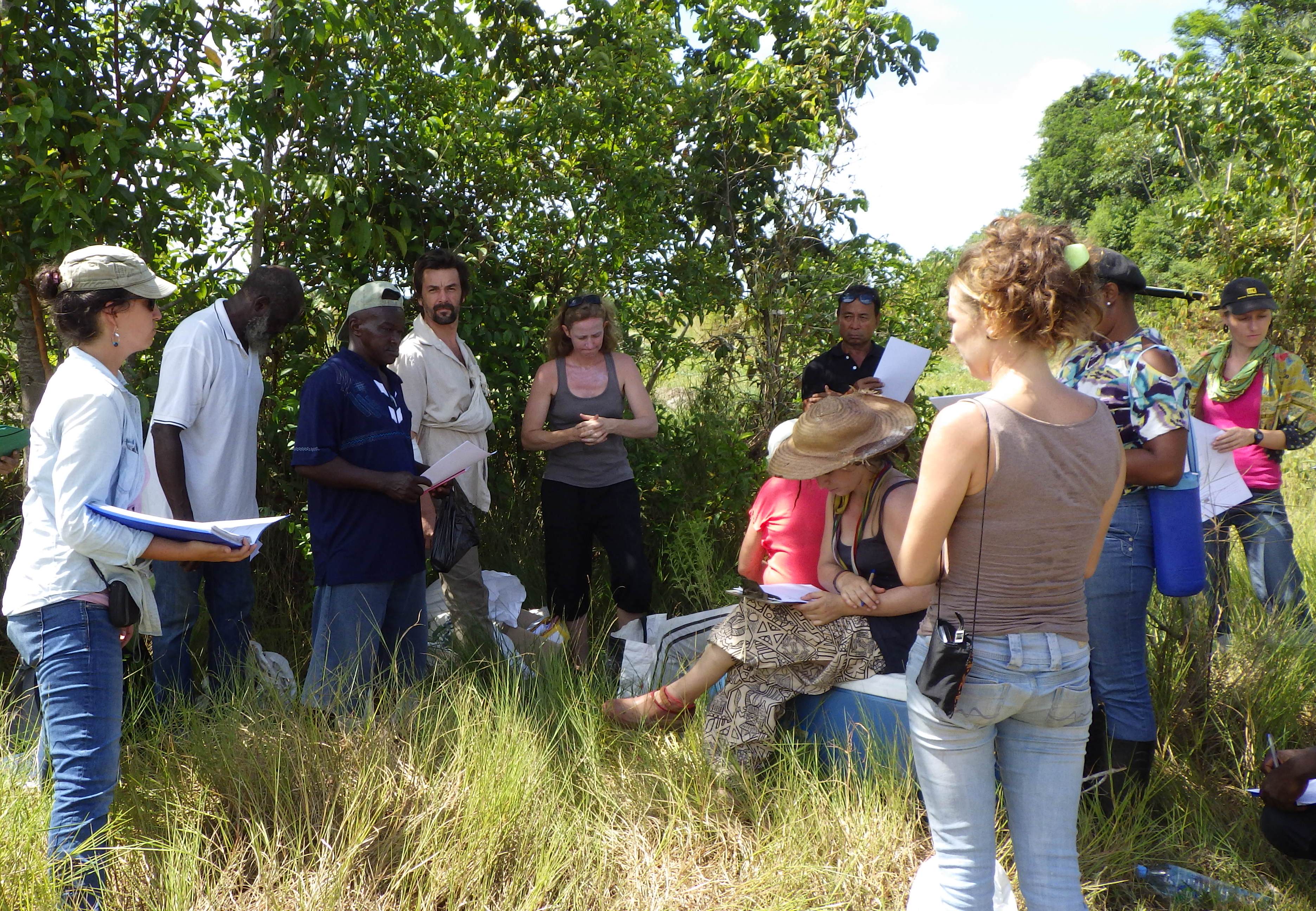
On the 9th of October 2015, at Matiti Agricultural High School, REAGI (The Trade Network in Intertropical Agro-Ecology) proposed a workshop on green manures and cover crops which brought together roughly twenty people from the agricultural world.
The subject was developed by L. DEMADE-PELLORCE from the InGaGen consultancy firm. InGaGen promoted the implementation of practices such as the use of green manures and cover crops while the students uncovered the IKARE plots at the high school, where some of the species may be found.
The plants employed are capable of providing agronomic services such as:
- soil protection by preventing runoff, erosion and improved water retention
- weed control by creating competition over light and available resources and control of pests
- improvement of physical and chemical properties (structure, soil stability, availability of nutrients) and fertility: increase of soil biological activity.
These plants can also be used for the production of biomass and fodder through:
- enhanced/ active fallow: i.e. the installation of inter-crop trees and/ or shrubs or use of herbaceous plants as a soil cover for protection and fertilization upon uncultivated land
- agro-forestry: the association of agricultural crops with perennial woody species with or without animals.
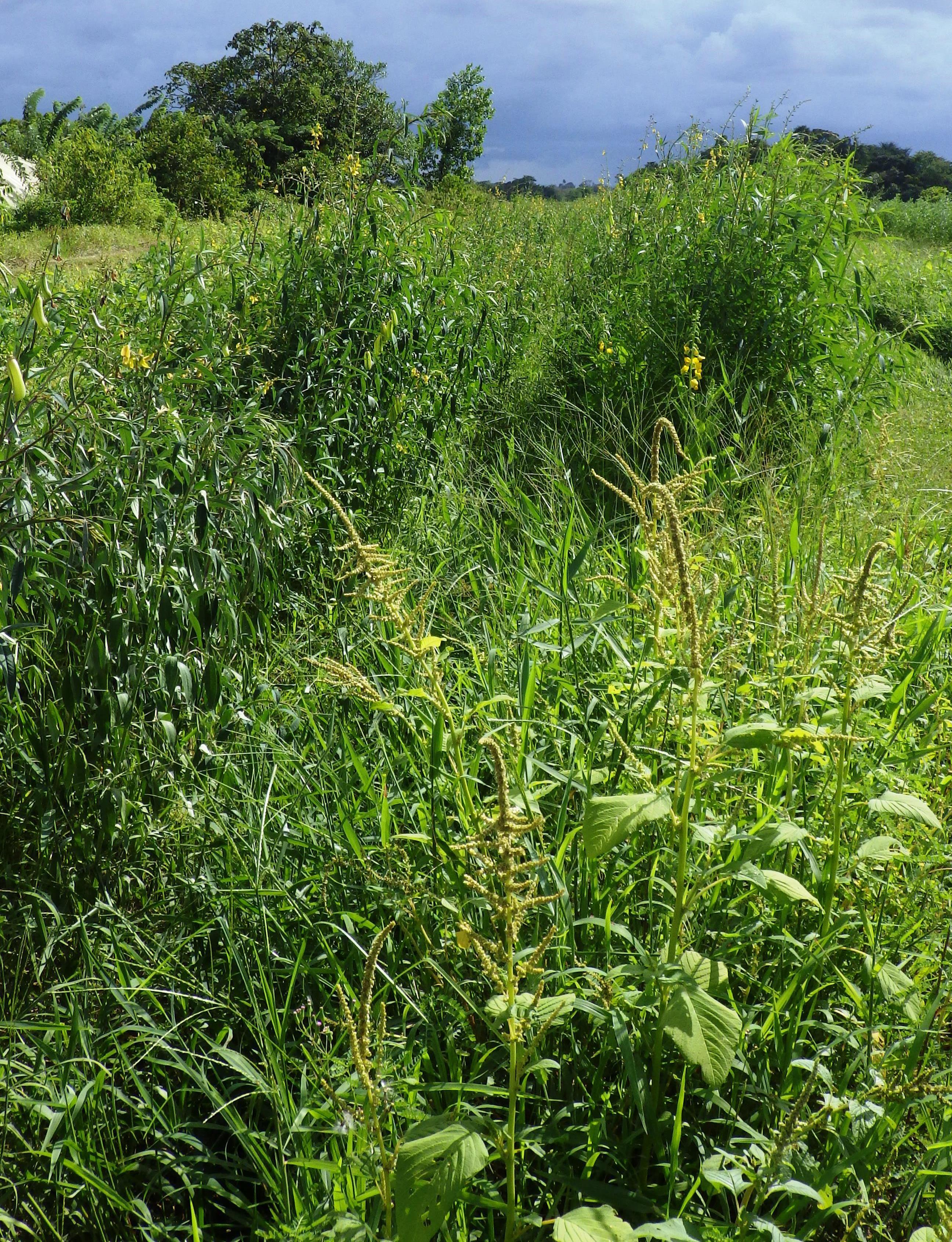
Species of interest, – available as seeds or graftings on the territory (such as Desmodium ovalifolium, Canavalia ensiformis, Alysicarpus vaginalis, Pintoin arachis, Bracharia ruzizienzis, Cajanus cajan, Crotalaria spectabilis, Crotalaria junceal and Calopogonium mucunoides), – were presented but during the establishment of an intercrop plant or of associated plants, the choice of the species is done primarily according to the objectives and constraints of the farmer. Then, the choice will depend upon the period of growth, the implementation strategy and whichever style of maintenance needs to be adapted.
Synthesis of local data on the main species (link in french)
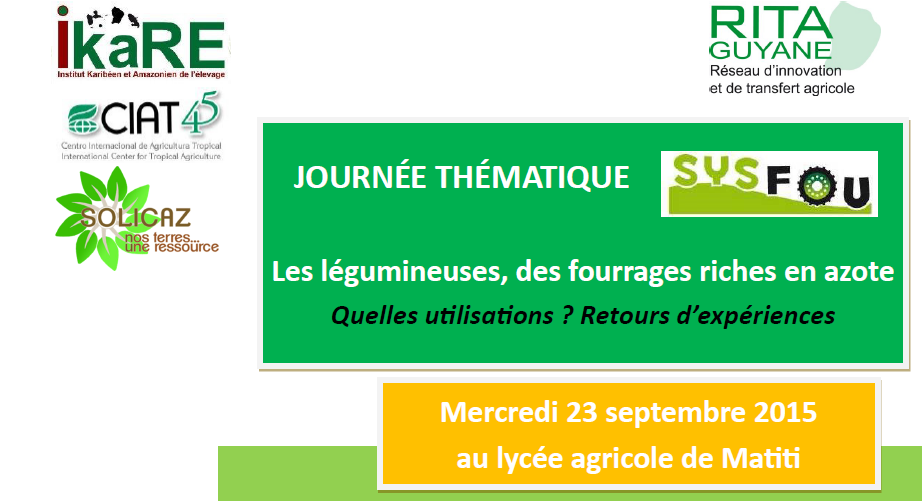
by Solicaz | Oct 9, 2015 | Agriculture/Agroforestry, News 2015
On September 23rd, 2015, Solicaz took part in the Legumes event at Matiti Agricultural High School, which brought together about 40 actors from the agricultural world.
The aim was to present the advantages of planting legumes in pastures, or on crop or fruit-growing plots to public farmers in French Guiana.
Rainer Schultze Kraft, an expert from CIAT (International Centre for Tropical Agriculture) who worked on a collection of tropical forage resources adapted to acid soils, presented a case study of successful agricultural association experiments in breeding / farming systems at the international level.
There at the Matiti Agricultural School, he highlighted the various benefits of using legumes, which improve soil fertility by providing organic matter, a structure for better soil conservation, erosion management and weed control. Legumes make it possible to produce forage of high nutritional value and high regeneration potential from a seed storage in the soil. They can also be used as an essential complement to traditional forage grasses, whose nutritional value decrease with age.
Rainer Schultze Kraft concluded his presentation by emphasizing that legumes are an important ally capable of increasing the production of meat, crops and/or trees in farming and other systems.
The guests were then able to see the fodder platform and the active fallow of the school before discovering the different experiments carried out by IKARE and SOLICAZ at the local level.
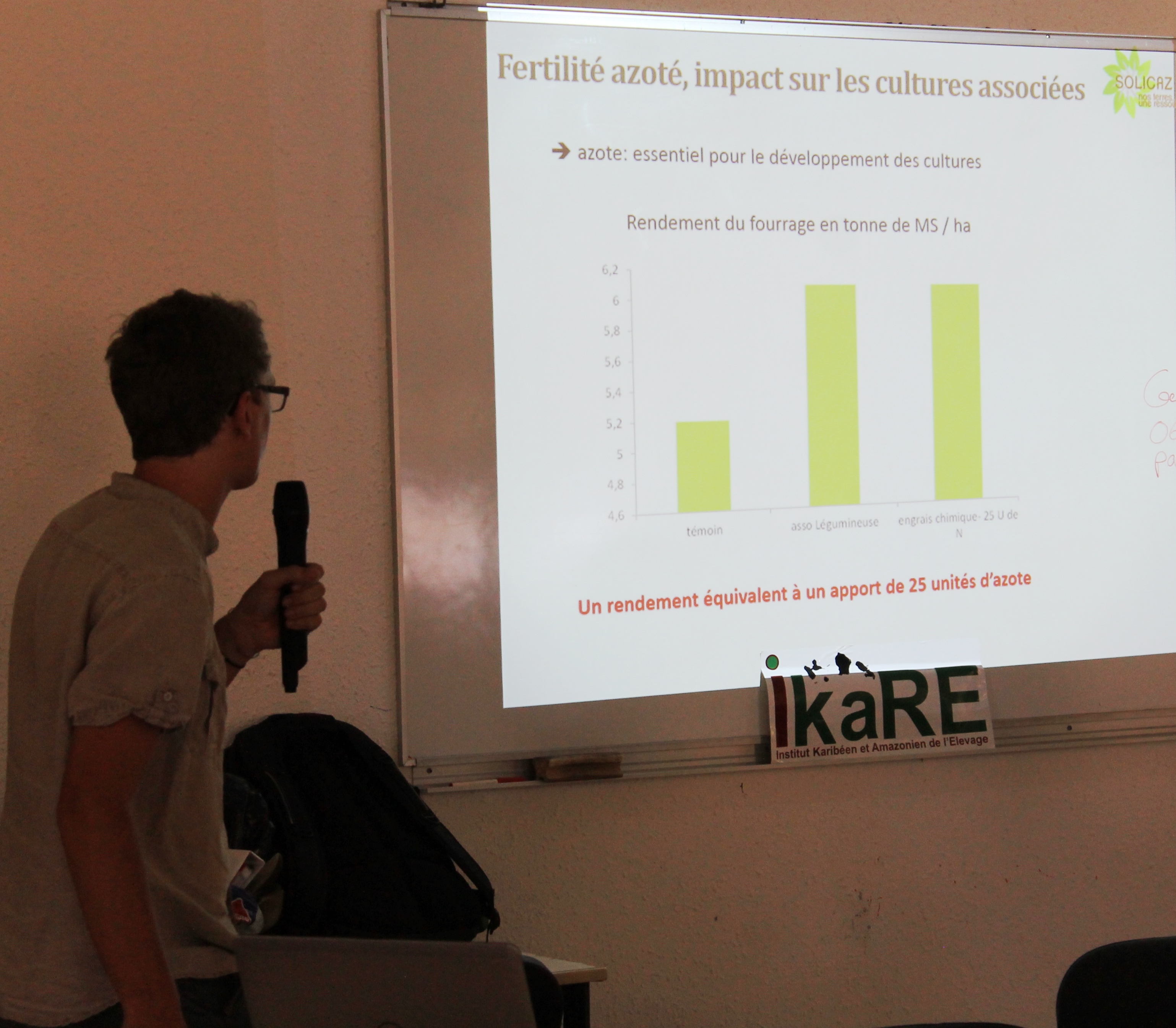
William Montaigne, Doctor of Ecology at Solicaz presented the results obtained on experiments whose aim was to improve the management of soil fertility in farming systems in French Guiana. For this purpose, an active fallow was set up with 3 legumes: Mucuna pruriens, Crotalaria ochroleuca and Cajanus cajan. After six months, high biomass production and improved soil fertility were observed as the control had been covered with weeds. The second experiment aimed to observe the impact of nitrogen fertilization on crops with a combination of Brachiaria humidicola and Desmodium ovalifolium. Two months after implantation, soil fertilization was already very promising and there was an improvement in the forage’s nutritional value.
Legumes allow for the sparing use of chemical fertilizers via their nitrogen fertilization capacities, which improves the intake and nutritious value of forage.
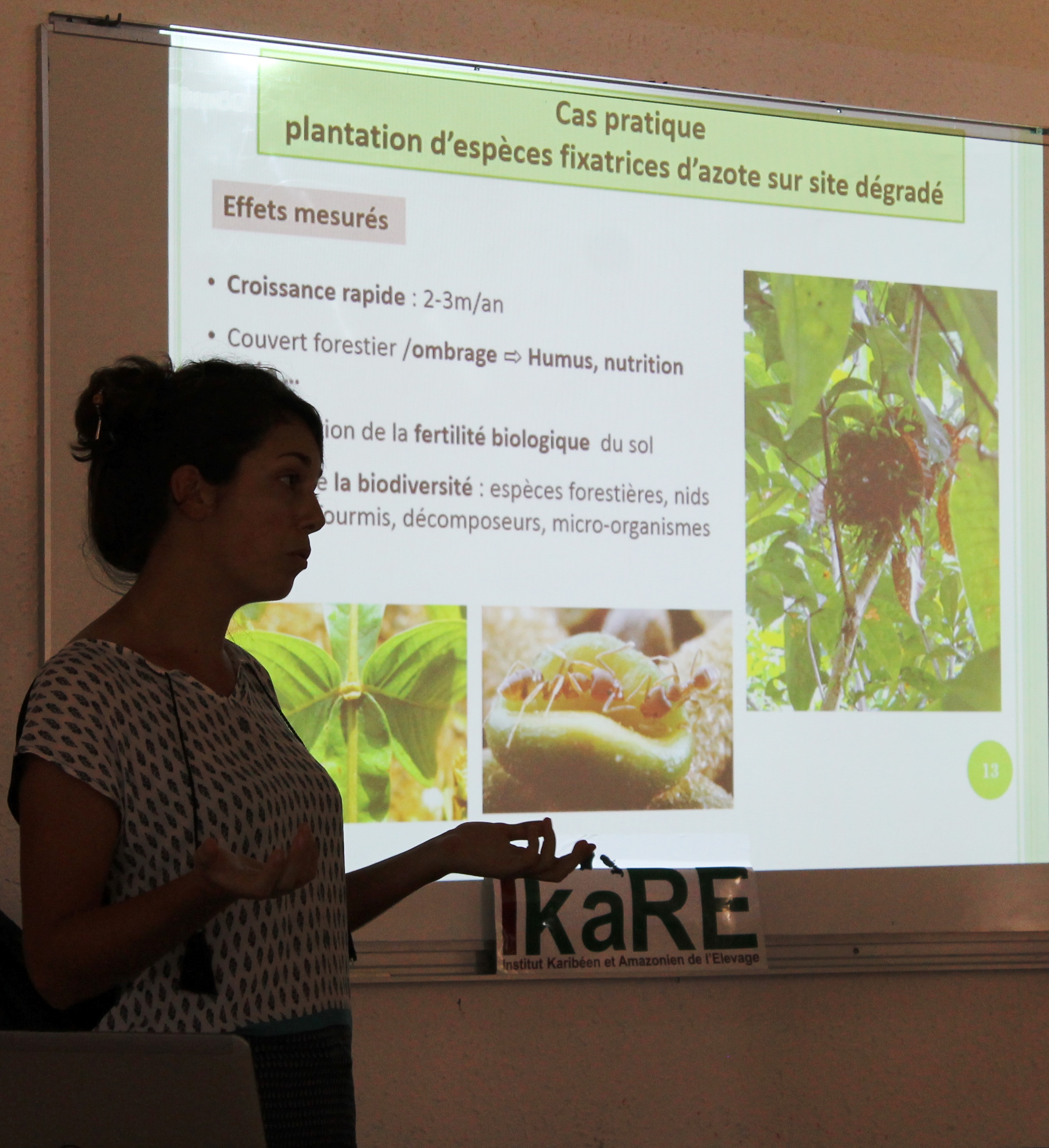
Géraldine PAUL, agricultural engineer at SOLICAZ has developed the subject of agroforestry by presenting legumes of Inga type, “sweet pea.” As part of an experiment, several species were planted on a soil that was deeply degraded. In two years, a biodiversity of flora and fauna (underground and aerial) reappeared.
Review of the day: Farmers benefit from including a legume species in their forage or crop systems. In addition to improving the structure and fertility of the soil, they save money and increase the yield of the meat, crops and biomass produced.
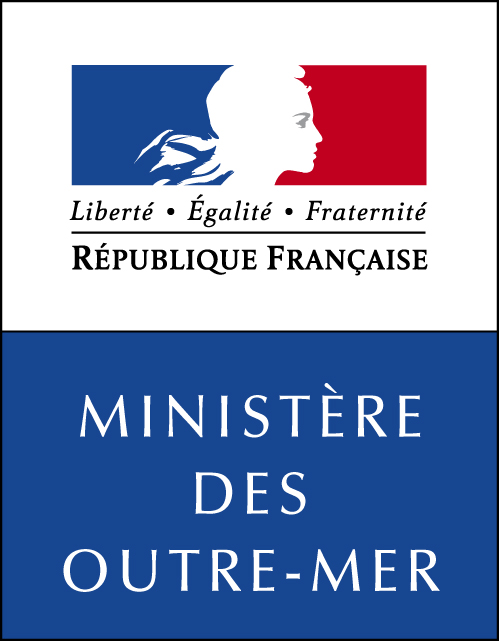
by Solicaz | Nov 4, 2013 | Agriculture/Agroforestry, News 2013
The population growth in French Guiana (anticipated to double in less than 20 years) raises the question of the sustainable development of local agricultural products. For example, for beef, local needs are only 20% satisfied by local production, and the only local sources for animal feed are grassland; most of the imports (meat and raw materials for compound feed) come from metropolitan France, with well-known difficulties in the movement of goods and a significant increase in costs. Imports from neighbouring countries (Brazil and Suriname) are now limited, but could become more important in the future. In this context, the development of local production with quality is an option selected by professional managers and local politicians.
Livestock production in French Guiana has been developed over the last twenty years, particularly in the framework of the Green Plan (Vivier et al., 1995). Since 2010, the IKARE association, which groups together the livestock sector, has been carrying out applied research activities in breeding aimed at improving the technical-economic performance of livestock farmers, transferring and popularizing the research results and innovative practices with breeders.
The main challenge of this project is therefore to aid in the provision of effective methods for French Guianese farmers to optimize soil management. This involves the development of innovative technical itineraries for soil management methods that make it possible to maintain or improve the fertility of cultivated soils, while remaining economically and socially attractive for agriculture. This optimization of soil management also reconciles production with the preservation of the quality of water and soil resources.
